The way we do things is constantly changing, and what we used to buy in stores we can now make at home. Whether it’s a simple device or a complex robot, the things we can achieve with a few tools and machines go beyond what we even imagined in the past.
Depending on the functionality of your intended project, a microcontroller may be a key part. A microcontroller is, in a nutshell, a small computer on a single integrated circuit chip with memory, interconnected to other peripheral components through the I/O ports. If you know what Arduino is, you know what microcontrollers are.
Is the future coming fast? No! It’s interacting with us day to day on our smart voice search engines and other things that aren’t just on their way, they’re already here!
In this article, we’ve listed just a few (of the many) things you can build with microcontrollers. There are many amazing projects currently being shared, and we’ve chosen some of the most varied, useful, and interesting ones for this list. For tinkerers who might just be getting started to Star Wars fans who want BB-8 in their homes, this list has something for everyone.
Let’s get to it!
Band Resistor Color Code Calculator
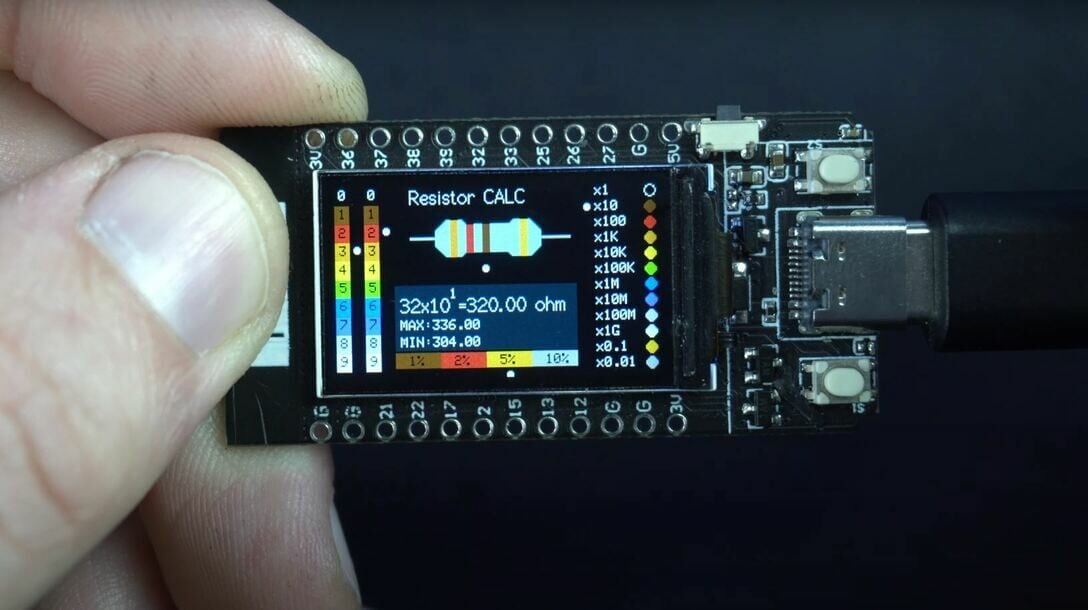
Whether you’re just curious and getting your bearings or you’re an experienced professional, you’ll need good tools to work on your project, and not everyone can memorize the values to calculate a resistor. Of course, if you use it a lot over time, you’ll record some patterns – but a little help is always welcome.
Whether you’re building a project from scratch or using some components from another board, this tool, which is built to calculate the value of a resistor, will help you organize yourself better and hit the nail on the head.
The project was published on YouTube and shared via GitHub with the codes for the microcontroller. There’s also a second version where the creator added rotary encoders and a battery on a PCB, making it even easier to consult values.
Say goodbye to that mess of mixed-up resistors that you might end up throwing away because you don’t have the patience to sort them out, and enjoy every second with more important things.
- Who designed it: Volos Projects
- Core components: TTGO T-Display Esp32, PCB
- Difficulty: Beginner
- Where to find it: GitHub (mini), GitHub (PCB), YouTube
Automatic Fish Feeder
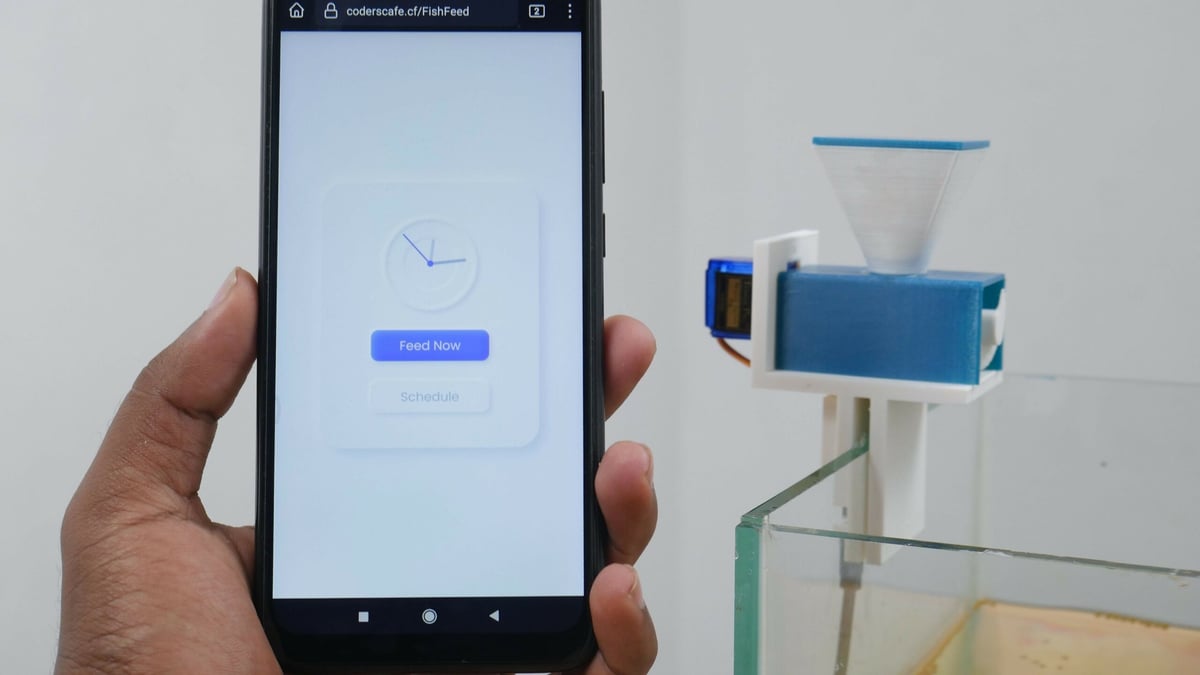
While it’s great to have adorable little fish at home, it can take some effort to make sure they’re well taken care of and fed regularly. In addition to a daily routine, a feeder can help a lot when you’re on a short trip or away for a couple of days.
Perhaps you’re wondering what is new here; after all, you can find similar things in stores. Well, with this project, you use a smartphone app to carry out a single manual feeding or to make a schedule for the feeding times of your pets.
The YouTube video demonstrates how the device works, and you can check the full details on Instructables, which include working with Firebase’s development platform, 3D printing a few parts, and putting it all together. If you come across any doubts, check out the comments. Users have gotten helpful responses to their questions so that they could complete this useful project.
Among the components, the creators note that any board with an Esp8266 chip can be used. When 3D printing the parts, it’s best to avoid supports for the Archimedes screw.
- Who designed it: CodersCafeTech
- Core components: Wemos D1 Mini V2, SG90 continuous rotation servo motor, 3D printed parts, power source
- Difficulty: Beginner
- Where to find it: Instructables, GitHub
DIY Weather Station
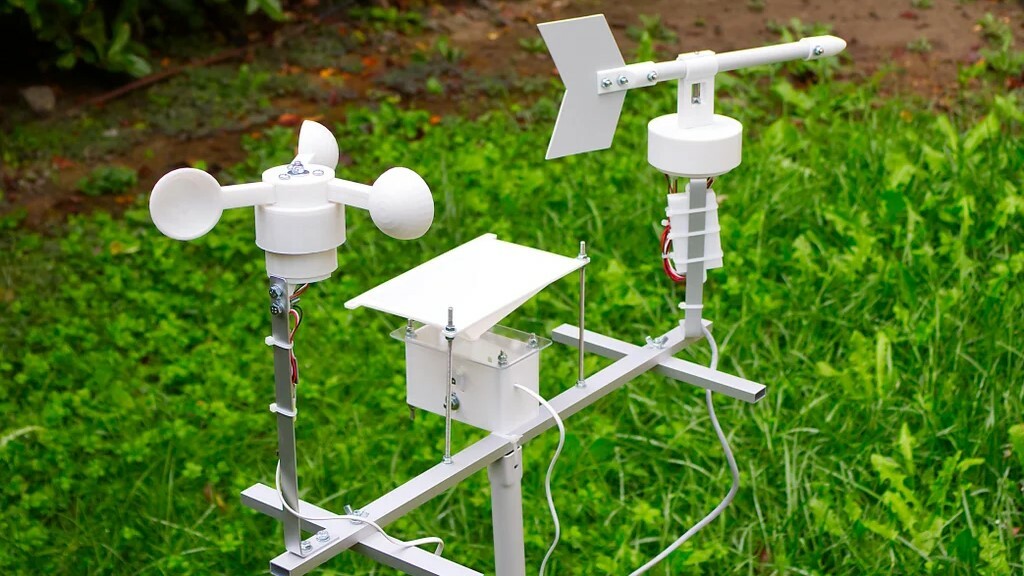
It doesn’t matter where you live, nowadays everyone feels that the climate is getting more unpredictable. Until recently, having a private weather station was something expensive and luxurious, but now you can simply set one up in the comfort of your home and increase your awareness of what’s going on outside.
This solution includes Home Assistant, which works as a server running on a single-board computer (e.g. a Raspberry Pi), that can be accessed through a web browser or in a real-time app to carry out monitoring. What can you keep track of? Temperature, humidity, rainfall, and more! And if Home Assistant isn’t your cup of tea, an alternative is to use Blynk – but you’ll have to write the code for it.
While the developer of this solution didn’t specify what type of filament they used in the 3D printable parts of the project, as it’s something that will be exposed to the weather and the sun, it’s important to consider more resistant materials like PETG and ASA.
- Who designed it: Giovanni Aggiustatutto
- Core components: Esp32 board with external Wi-Fi antenna, DHT22 temperature and humidity sensor, BMP180 pressure sensor, Hall effect sensors, 3D printed parts
- Difficulty: Beginner
- Where to find it: Instructables, YouTube
Air Hockey Table
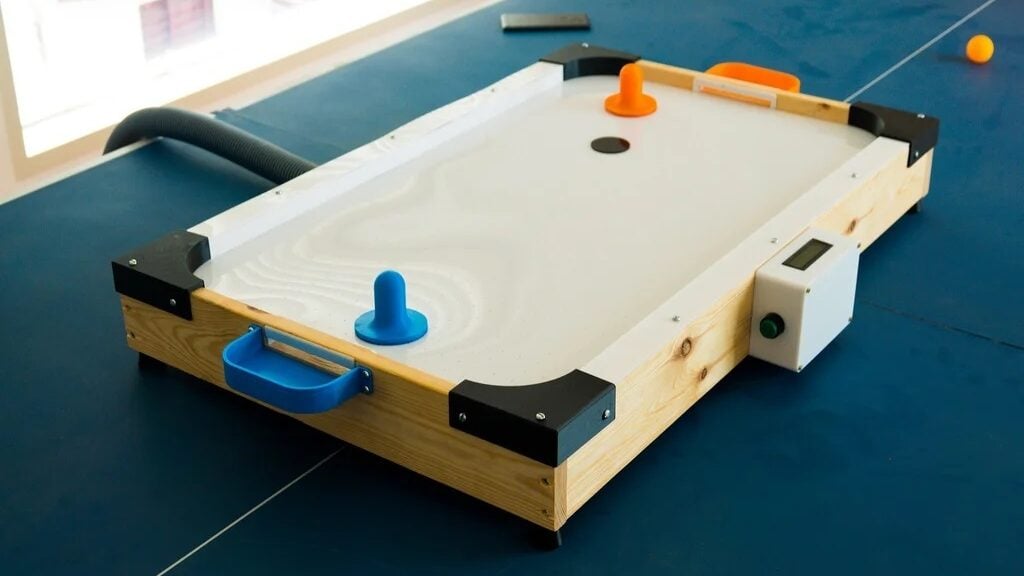
Playing air hockey often depends on finding an available table at a club, gaming store, or park, but now it’s also possible to make your own at-home version. You’ll need some woodworking skills, tools, and a blower or vacuum that offers reverse function, but you’ll definitely be able to pull off this move.
In addition to the thorough list of materials and detailed tutorial, the creators also include an explanation of the principles of air hockey, so this isn’t just a practical learning project, but also a theoretical one!
The table comes with an electronic scoreboard so you don’t lose count while playing with your family or friends, and it even has colored LEDs on the sides. If you’re wondering how popular this project is, it won First Prize in Instructables’ 2019 Games Contest!
- Who designed it: Technovation
- Core components: Arduino Uno, air blower, LCD display, 3D printed parts, wood
- Difficulty: Intermediate
- Where to find it: Instructables, YouTube
3D Printed Pen Plotter
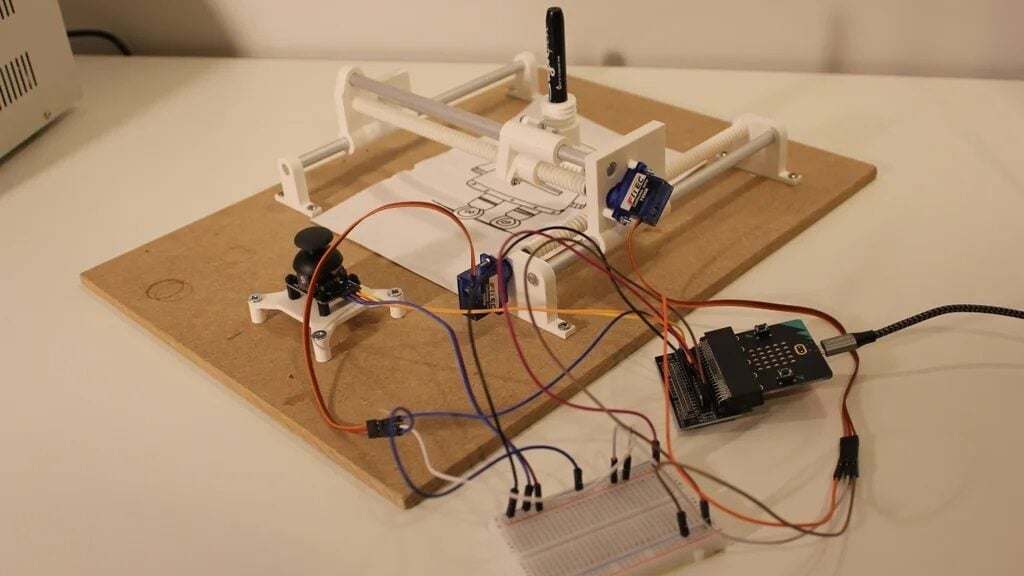
Learning about and practicing computer numerical control (CNC) isn’t usually cheap. The author of this project created this pen plotter with the goal of making the most of 3D printed parts and using affordable components to increase accessibility.
The result is a project that many can use for their studies and to improve their skills while discovering practical details of how a CNC machine works. This is achieved through a similar mechanism, in this case a pen plotter guided by a joystick. The machine might be a little slow, but it’s perfect for demonstrating the basics.
The external thread pen holder is tapered on the inside, so you need to find a pen that fits and screw it in until it touches the paper. The 3D printed parts were made with 10% infill but for some more complex parts, such as the screw, it may be interesting to increase the infill for greater resistance.
Programming was done for Micro:Bit, a microcontroller designed by the BBC and other partners, including Microsoft, for educational projects. In case you don’t know how to get started, the pen plotter’s creator recommends a YouTube video, and you can also check out makecode.microbit.org.
- Who designed it: Henkeify
- Core components: Microcontroller BBC Micro:bit, Micro:bit breakout board, servo motors, 3D printed parts, 2-axis joystick module
- Difficulty: Intermediate
- Where to find it: Instructables
Orbion: 3D Space Mouse
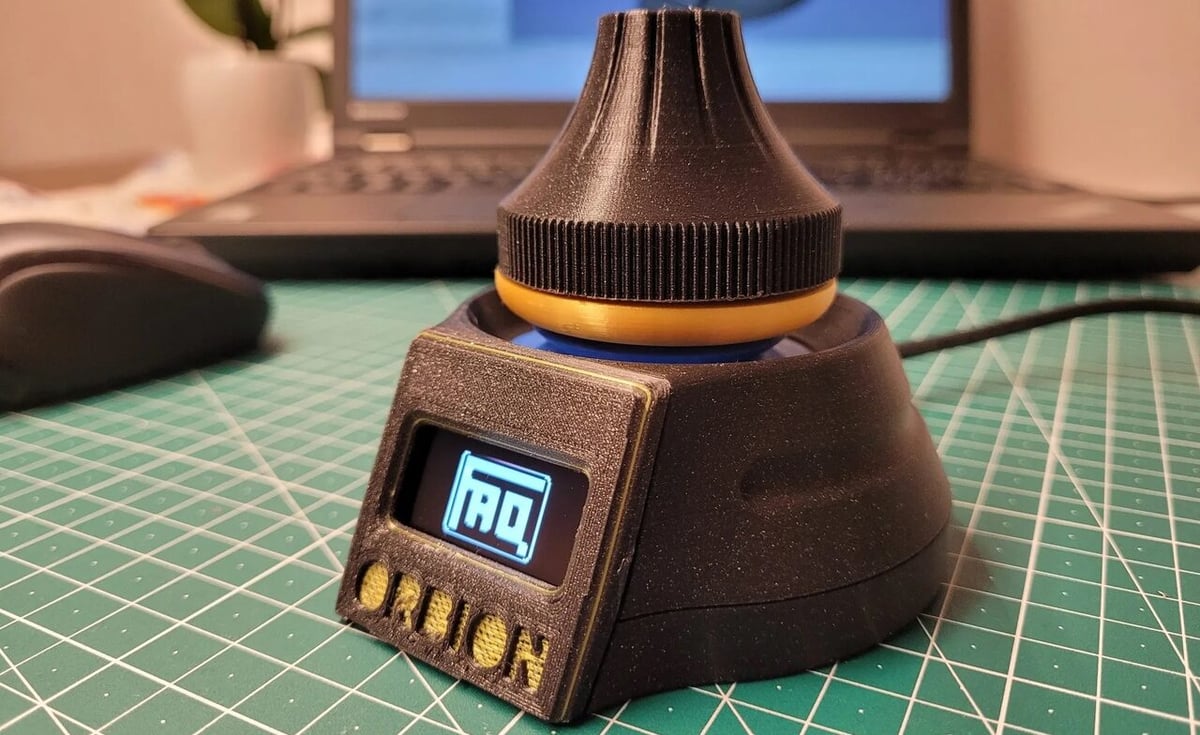
3D modeling requires some serious skills, and it can be much faster and more productive when you have the right tools. Normally, you’d need to use the mouse to manipulate the view of the object or 3D scene before getting the proper angle for editing. There are shortcut keys, yes, but for some, manual manipulation may afford even more versatility and options.
If you add the Orbion to your workspace, you manipulate the visualization with one hand. With the other, on you activate tools and edit at same time on the mouse. This HID device can be used on any operating system, including Android and iOS, and you’ll notice that the vast majority of modeling and animation programs, as well as others like browsers and games, can interact with this new peripheral.
Building this mouse requires some additional skills, like using a soldering iron and a few other electronics and programming techniques. However, even if you’re a beginner, you can be guided by the PDF that explains how to record the code in the microcontroller.
Once you if you get used to it, it’ll be like a new limb of your body!
- Who designed it: FaqTotum
- Core components: Arduino Pro Micro, OLED LCD display, joystick, encoder
- Difficulty: Advanced
- Where to find it: Printables, GitHub
Split-Flap Display
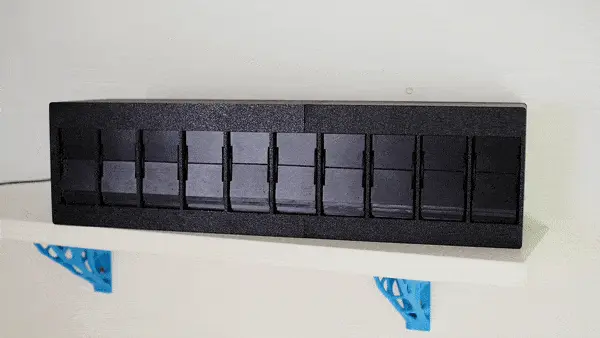
Used in bus terminals, railways, airports, and many other places, this device brings a touch of retro-style charm to modern times. You can set up a clock or a sign to decorate your environment in a unique way. It will bring a nostalgic air, but with fresh messages.
The model in the photo is made up of 10 units of 45 tabs and has a size of 513 x 136 x 138 mm, but it can be extended up to 16 units to form a larger phrase. The creator provides a detailed PDF manual for the project’s components and assembly, and special attention should be given to the hardware clarifications before purchasing anything.
For the 3D printed parts, even if you don’t have a printer that does more than one color or material, you can always paint the letters, symbols, or numbers of choice.
- Who designed it: David Kingsman
- Core components: Arduino Nano, Esp8266, 12-V stepper motors, 3D printed parts, custom PCB
- Difficulty: Advanced
- Where to find it: Printables, GitHub, Reddit
Arduino Ant Hexapod Robot
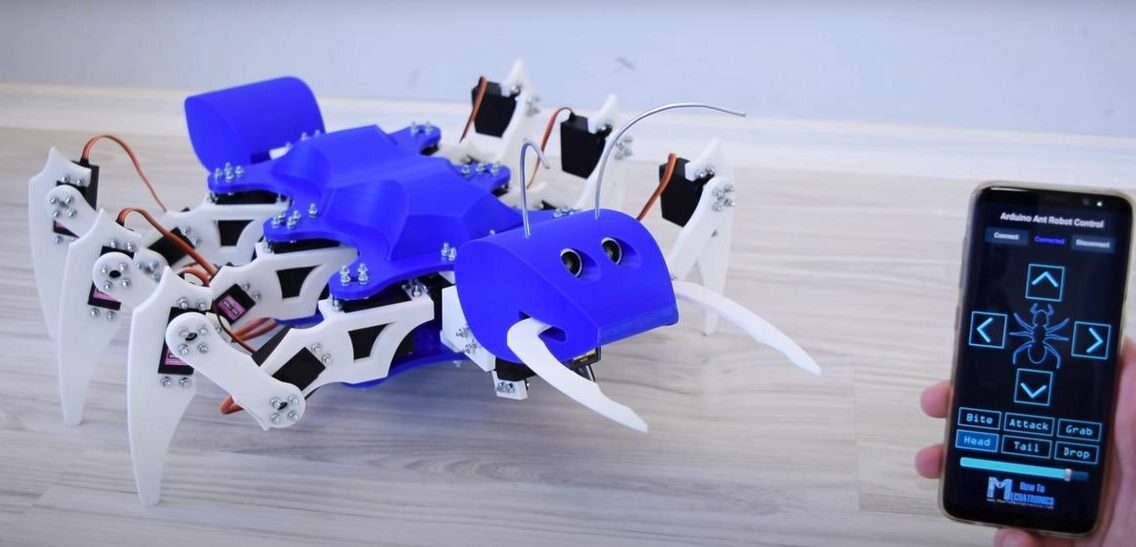
There are many types of robots out there, but hexapods have a special charm that makes everything more interesting with their many legs and complex movements. This little ant may be friendly at first glance, but make no mistake, it has proximity sensors and its programming includes defense and attack routines.
The mobile application, specifically designed for this project, allows you to control this little robot’s movements by making it walk and even moving its tail. Some tips about the supports and orientation of the different parts are included, with a warning that the head is the most difficult part to get right. The assembly also uses a lot of screws and nuts that need to be well fixed. In addition, you’ll need to be careful with the position of the servos to facilitate the assembly.
While the project is advanced, not only did the creators include explanations and organized steps, but they also shared the PCB design that they went for.
- Who designed it: Dejan
- Core components: Arduino Mega, servo motors, HC-05 Bluetooth module, ultrasonic sensor, LiPo battery, 3D printed parts
- Difficulty: Advanced
- Where to find it: HowToMechatronics, Thangs
Life-Size RC BB-8
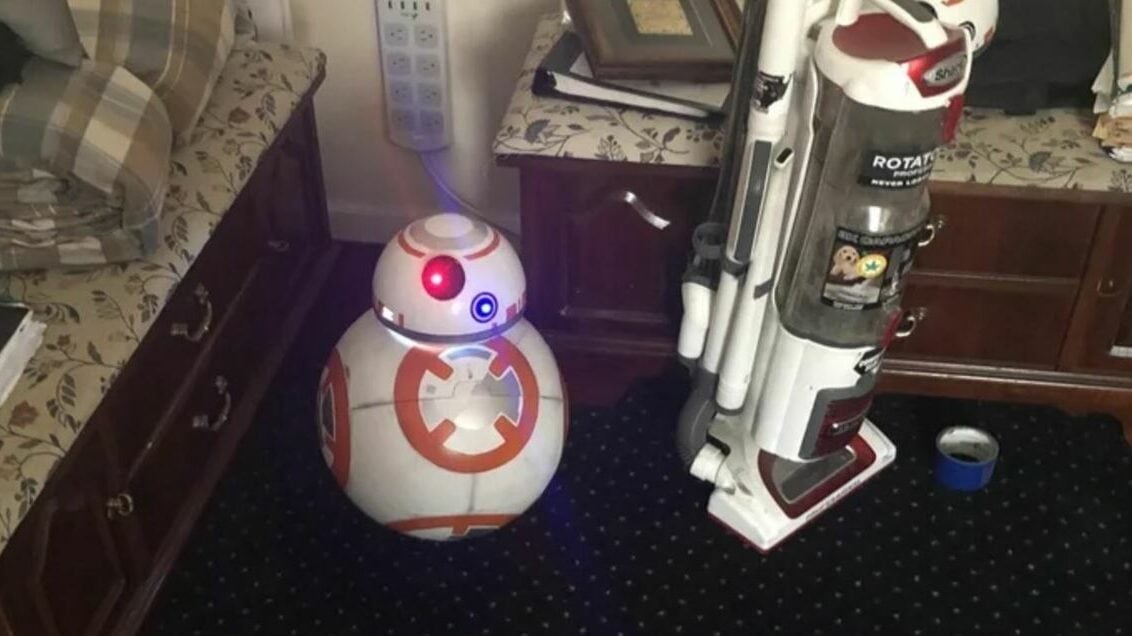
It’s impossible for this famous and unmistakable little robot to go unnoticed when he’s so cute. Since BB-8 made his first appearance in 2015 in Star Wars: The Force Awakens, he has generated fascination among droid lovers because he’s different from anything seen so far, and he wasn’t a CGI creation. Those who like to build things know that it’s no easy task, although it can also be infinitely rewarding.
While not the exact model used in the movie, it was inspired by it. Setting up this remotely-controlled robot is a real challenge, as there are many details, parts, tests, and other considerations that make it come to life.
The creator of this project provided all the necessary information in a well-organized way, with thorough material lists and steps for each stage. That said, when it comes to 3D printing, you won’t need a large printer because the project was made with a 150 x 150 x 150 mm print bed in mind.
- Who designed it: nachumtwersky
- Core components: Arduino Mega, Arduino Uno, HC-05 Bluetooth module, joystick shield, about 3 kg of 1.75-mm filament, lots and lots of time and patience, motors
- Difficulty: Advanced
- Where to find it: Instructables
Long Range Alarm System
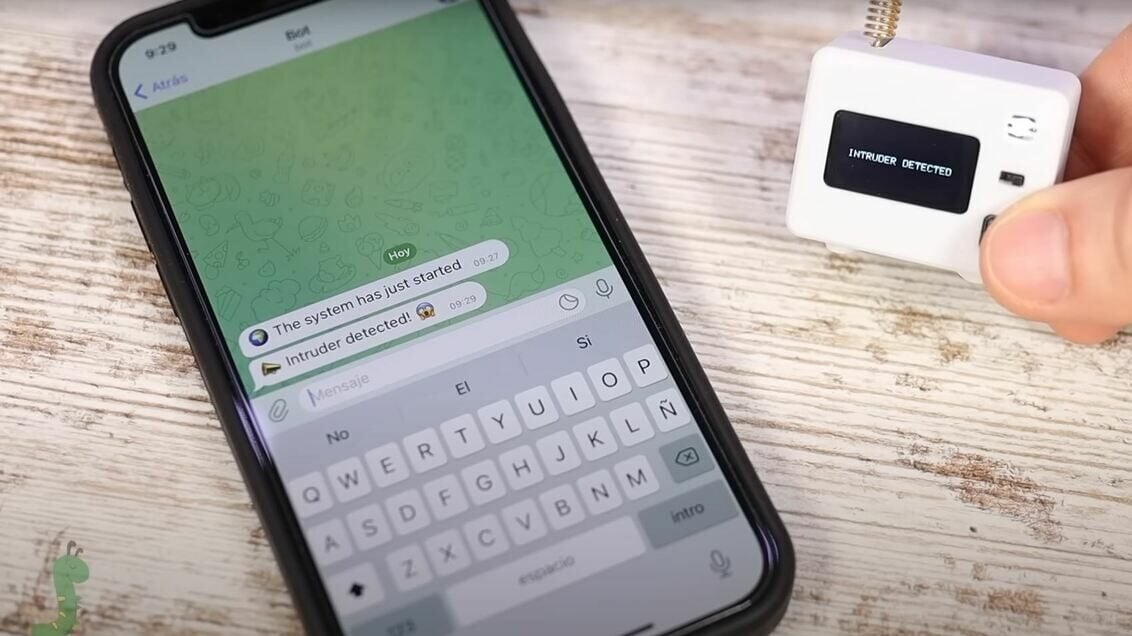
There are many types of alarms and security systems that you can buy in stores, but they don’t always have exactly what you need. Depending on the place where you’re installing a security system, the installation conditions may not be ideal. It can be a headache to make everything work right and be worth the investment. The important thing is to have good results – putting it all together will depend on your skills.
This long-range system manages to be very efficient at breaking through signal barriers where you might not be able to find any other solution than wireless. The whole system is divided into modules of sensors, transmitters, and receivers that the creator made especially to hide in the electrical system of the place, which makes the solution even more interesting.
The intelligent system triggers the alarm when there is an invasion and when there is a loss of signal, notifying you if someone breaks in after cutting the main power.
- Who designed it: Elite Worm
- Core components: Esp32 microcontroller, 868 MHz long range “LoRa” module, OLED display, 3.7-V LiPo battery with an onboard charger, RGB led
- Difficulty: Advanced
- Where to find it: GitHub, YouTube
License: The text of "Top 10 Microcontroller Projects of 2023" by All3DP is licensed under a Creative Commons Attribution 4.0 International License.



